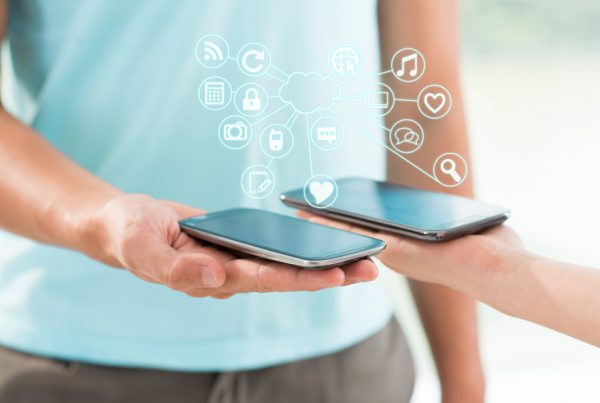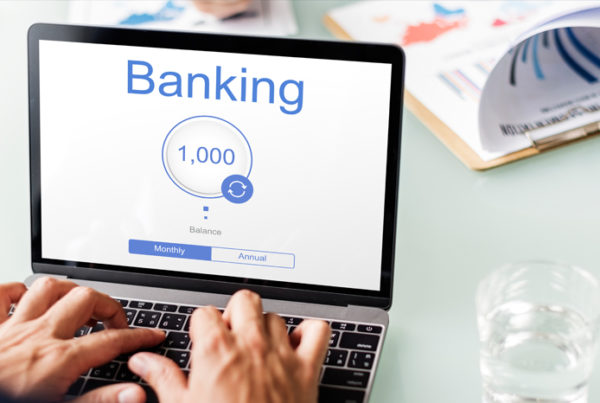Good governance is about people: of the people, by the people, for the people. With more people armed with mobile and internet, governance also needs to go digital. While digital governance is topping the agenda of many nations, most governments still have a myopic view of it putting only generic information online. If governments truly want to harness the benefit of digital governance they need to focus on how technology can be used to create citizen-centric experience.
A citizen-centric experience is about simplifying people to government interactions by making it digital. Consider applying for a passport. A truly digital process would’ve used digital tools such as the internet and the mobile for the entire process – right from filling required details, providing verification documents, paying service charges to tracking application status. With mobile and internet making deep in-roads into emerging economies, delivering such seamless digital experience is now imminently possible. However, there are few weak links, such as payments. With majority in emerging markets being unbanked and un-carded, digital payments remains a challenge.
Mobile money, which has rapidly risen as a preferred alternative payments medium in emerging economies is the answer. Governments across the world are leveraging the power of mobile money to digitize Person to Government (P2G) and Government to Person (G2P) payments, advancing digital governance agenda, as well as achieving sustainable development goals.

Person to Government payments (P2G)
Governments are using information communication technologies to improve the quality and efficiency of public sector service delivery. This includes usage of mobile money for P2G payments. According to the GSMA, in 2014, the ability to make payments to the government via mobile money was live in at least 13 markets across Africa, Asia and Latin America1.
Tax payments
Tax payments can be very taxing! Citizens have to fill up long forms, visit their local revenue authority or bank, and stand in long queues for hours on end to pay their taxes. But not anymore! Governments are now moving toward e-filling and mobile payments. Revenue authorities in countries like Kenya, Tanzania, Mauritius, Guyana, Rwanda, Cameroon, Uganda and Philippines enable individuals and businesses to use mobile money to pay income tax, corporate tax, property tax and VAT. With an end to end digital process in place tax payments get sorted in minutes.
In addition to delivering convenience to citizens, mobile based tax payment is helping governments to curb tax avoidance and boost the amount of tax collected. Tanzania and Mauritius revenue authorities have experienced increased in tax collection due to introduction of mobile based tax payments. Digital tax collectioneliminates the need for maintaining and storing physical documentsand allows government officials to keep and track records electronically.

Government of Kenya is planning to sell government bonds via mobile. The platform known as M-Akiba will be delivered through all the major mobile money services, offering bonds worth Ksh 5 billion (nearly US$47 million) to over 32 million citizens. Today, 98% of government bonds are purchased by institutional investors and only 2% by individual investors2. By using mobile retail channels, the government hopes to reach more individual investors increasing their participation in government bond issuance. Citizens will not only be able to purchase bond via mobile money, but also receive the principle amount and interest in their mobile money account on maturity of bonds.
Payments for government services
In emerging economies, the private sector is either too weak or there’s a monopoly in the market leading to citizen exploitation. To accelerate economic growth and benefit the entire population, governments have set up public sector entities and institutions to provide basic amenities like electricity, water and sanitation amongst others. Citizens pay a charge to access these services, which in most cases is through cash or cheques. However, paper-based payments come with considerable costs. Besides financial costs related to printing, security, postage and clearing & handling of cash, there’s non-financial costs to consider such as growth of shadow economy as well as various environmental and security risks. The burden of cash usage on society is as significant as 1.5% of the GDP3. Moreover, due to limited collection points, usually there are long queues for payments inconveniencing citizens and creating chaos.
These challenges can be overcome by using digital payments. In many emerging economies, mobile money is finding new use cases everyday: paying bills for utilities; buying tickets for public transportation; paying fees for schools and universities; paying for medical treatments and premiums for insurance. Mobile money brings cost benefits and savings for both citizens and government entities. Citizens save time and cost of travelling to payments points whereas public sector entities are able to reduce costs of paper invoicing besides curbing the menace of shadow transactions as well as reducing carbon footprint by eliminating paper receipts. Some successful examples of G2P payments are:
School fee payments in Côte d’Ivoire: The Ministry of National and Technical Education (MENET), in Côte d’Ivoire, made it mandatory for secondary school students to pay their school registration fees digitally via of one of four accredited mobile money providers. In 2014, 99% of the students paid school fees digitally – 94% of which were mobile money transactions and 6% of which were online payments – proving the success of the MENET’s P2G payment strategy. The digitization of school fee payments provided two major benefits. Firstly, itreduced leakage of funds caused by theft, bribery and security issues.Secondly, digital registration of secondary school students allowed MENET toconsolidate its student database and significantly increasing the quality of its information. The database is now more up-to-date, includes a comprehensive list of 1.5 million secondary school students, and has eliminated duplicate entries 4.

eServices portal in Ghana: The Government of Ghana, in December 2014, launched Ghana Electronic Payment Platform (GEPP) facilitating digital payments for government services on its eServices portal. Citizens could pay online or through their banks or mobile money services like Airtel Money for various government services like passports, business registration, tax administration and police search reports. In order to process the mobile money payment the user must choose the mobile money provider on the eservice portal and fill in the relevant details. The payment is deducted from citizens’ mobile money account and confirmation is sent via SMS.

Government to Person payments (G2P)
Now, let us look at the other side of the story – government cash disbursements. Government gives financial aid to citizens in the form of cash, subsidies, distress payments and salaries. Governments globally are adopting mobile money to make cash disbursements frictionless.
Cash aid and subsidies
The government provides financial aid to the poor directly in the form of cash as well as indirectly through various cash subsidies on items like fuel, cooking gas, water and electricity. Most cash assistance schemes are hindered by long cash disbursement cycles, presence of middle men, large number of unbanked beneficiaries and inability to directly reach the beneficiary. With widespread mobile reach, mobile money is the quickest and the most cost-effective option to disburse cash to beneficiaries.

In India, the Government of Madhya Pradesh, with partner Vodafone M-Pesa, disburses financial aid to mothers, who receive the payment directly on their mobile phone. The beneficiary is informed with an SMS mentioning the amount of the subsidy, the withdrawal code & procedure, facilitating cash-out at any Vodafone M-Pesa agent. Direct disbursement to the mothers has resulted in reduction of the money being collected by the fathers and therefore never reaching the intended beneficiary in some cases.
Mobile money based cash disbursement is most useful in emergencies such as earthquake and floods. For example in Pakistan in 2014, the government partnered with mobile operator Mobilink to disburse funds to flood victims. The use of Mobilink’s mobile money service Mobicash ensured that fund disbursement is swift and transparent. Beneficiaries were able to cash-out flood relief funds from designated campsites located across the flood hit areas. The team deployed at the locations used Bio-metric Verification System (BVS) to maintain transparency and ensure that the funds reached the intended person.
Not only government, but NGOs are also partnering with mobile operators for financial aid disbursement. Monetary aid is a better option compared to in-kind aid (such as food bags) as the affected families can use the money as per their choice and individual needs.


Salary payments
In many developing countries, the government and public sector are the largest employers. Paying salary and pension to serving as well as retired personnel in far flung areas can be very challenging. Irrespective of whether a person is banked or unbanked, permanent or contractual, mobile money provide a robust channel to transfer salaries directly. The solution offers convenience specifically to the old age pensioners, as they can cash-out their salary at nearest mobile money agent and do not need to travel to bank or government offices to fetch salary.
Mobile money salary payments eliminate the role of the middlemen reducing corruption. A good example is the Afghan National Police which uses Roshan’s M-Paisa to pay staff located in remote areas ensuring full and timely payment of salaries. The previous cash based salary system was marred by corruption with senior officials pocketing salary disbursements with such impunity that many junior policemen were not even aware of their real salary. With M-Paisa these policemen received their salary in full and on time leading to surprises all around. In fact, in some cases, the hike was as much as 30%, preventing defections of policemen to the Taliban who were paying higher salaries5. The use of M-Paisa helped to uncover ghost police officers, constituting 10% of the workforce, whose salaries were pocketed by others. In Democratic republic of Congo more than 66,000 civil servants, including the military, the police force, and pensioners receive payments via Airtel Money6.
The road ahead
There are several successful examples of G2P or P2G digital payment transactions, some of which I have mentioned above. However, another truth is that most governments have just focused on digitizing only one or two initiative. The true vision of digital governance can only be realized if there is a comprehensive strategy to digitize every use case scenario where the people and the government transact – whether it is a G2P or a P2G payment. The importance of user experience cannot be understated. Instead of providing a different user interface for every service, there should be a single portal/app for handling all government transactions. Whether it is paying electricity bill, purchasing train ticket, paying tax or receiving subsidy – every payment should be on a single portal, providing a seamless user experience, leading to higher adoption of digital transactions. Governments should also collaborate with all the digital payment players in the market without any bias to ensure that the digital payment initiative has a wider reach.
2 http://www.busiweek.com/index1.php?Ctp=2&pI=4248&pLv=3&srI=69&spI=221
5 http://foreignpolicy.com/2015/08/12/afghanistan-calling/
6http://africa.airtel.com/wps/wcm/connect/africarevamp/africa/home/media/press-releases/airtelmoney
About the author – Mohit Bhargava has over eight years of work experience in product marketing and research in the telecom domain. At Mahindra Comviva, he is serving as Manager in product marketing for the mobile financial solutions portfolio. His areas of function primarily include evangelizing Mahindra Comviva’s mobile financial products and their impact on transforming the financial landscape globally.






